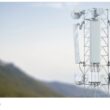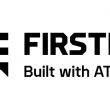Promises, promises
It may be every firefighter’s dream to have real-time 3-D walkthroughs of a fire in progress, streaming video from inside a building or dynamic floor plans that show hot-spot locations, but real-life needs are far simpler. Knowing exactly where a firefighter is inside a building is great, experts say, but it would be almost as good — not to mention more technologically feasible — to put information on what else might be inside a building at crews’ fingertips, such as stored chemicals, flammable-gas tanks and other noxious materials.
As long as 10 years ago, emergency responders were hearing extravagant promises about the avalanche of information that would be available to them as they sped to an event, said mobile-data expert Todd Wilkerson. Live video, prior history of incident locations and real-time GIS information were just the tip of the iceberg, and technical issues were talked about as an afterthought — if they were talked about at all.
“The hard part was supposed to be sorting out the necessary stuff from what wasn’t needed,” Wilkerson said. “We were all thinking that the limitations would be collecting and choosing the data to be exported to users. We didn’t realize that we’d still be dealing with antenna and interference issues.”
Wilkerson said the slower-than-expected rollout of services that would serve firefighters and other emergency workers mirrors similar delays in other fields, such as warehousing and fleet management. In each case, he said, nagging technical problems, combined with the complexity of deciding what information is most needed by users, have slowed down progress.
“A firefighter needing to know what’s in a building and what truck or piece of equipment to send there is fundamentally the same as a fleet manager trying to figure out where to send which 18-wheeler,” Wilkerson said. “In both cases you have to know what you have, what there is where you’re going, and how to pull things together as quickly and economically as possible.”
Some of the delays in offering firefighters what computer scientists call a rich data environment are purely technical, such as the power and line-of-sight requirements for most data signals and the time and expense inherent in setting up a data network at the scene. Even with the advent of mesh networking of handhelds, however, most of the information firefighters get about their surroundings comes the old-fashioned way, over the radio from incident command. Dispatchers ask questions of the reporting party, such as what the building is used for and whether there are hazardous materials present, then relay that information via radio to scene commanders, who pass it on.
This approach presents problems with which all firefighters are familiar: The caller doesn’t know what’s on the premises or doesn’t stay on the line long enough to say; workers in one part of a sprawling industrial building have no idea what goes on in another part; or the building is being used for illicit purposes and the reporting party has no incentive to be honest about what’s there. Combine the lack of good initial knowledge with site-specific technical issues, such as interference from nearby radio transmitters or structural impairments, and firefighters can find themselves headed into a situation with blinders on.
“It’s great to be able to account for your people on the scene, no question,” said Don Carnahan, who recently retired after 25 years as a firefighter in California and now does training and consulting. “But the next level of that usefulness is going to be when we start to have on-demand access to information about a location and can make decisions about how to approach a situation on the fly.”
Carnahan says that in his years as a firefighter he faced many situations where a little more advance knowledge could have altered an outcome.
“I can’t think of a time when lives were lost because of something we might have known, thank God,” Carnahan said. “But I’ve seen a few buildings be totally lost because we didn’t know about something inside, or we had to wait on some piece of information before we could make an entry. That happens every day.”
Carnahan said the kind of information that might be most useful — building plans, materials-storage permits and the like — often are available in fire department files but can be punched up on a mobile terminal far less often.
“If you’re on your way to a scene and the location has a permit for handling something hazardous, wouldn’t that be great to know up front?” Carnahan said. “Most often, [responders] get to a scene, have a look around, and if they think there may be something there, they’ll radio a dispatcher to look into it. That wastes time.”
Again, the information that is available at a responder’s fingertips depends on decisions made far in advance of an event, Wilkerson said.
“We still face a limited landscape in terms of the migration of paper data to electronic data,” he said. “Lots of city offices and even fire departments have paper copies of all their permits but no good way of going through them electronically. And even if you’re asking a dispatcher to move over one terminal — from a dispatch console to a computer where they can look up location information — that’s time lost compared to being able to do it all remotely, say from a mobile terminal in a pumper truck or a command unit.”
What needs to happen, Wilkerson said, is a wholesale integration of pertinent public records, including site residents, business uses, permitted stored materials, floor plans and maps, prior incident histories, and contact information. Only once all that information is pulled together and stored in some kind of GIS archive, then formatted in such a way that it can be transmitted easily and quickly in field conditions, does it become usable, he said.
“That’s a tall order for any fire department, and it’s an even taller one for a smaller department that handles permits but doesn’t have the resources to completely change the way it works,” Carnahan said. “When we’re still talking about smaller agencies that are having trouble being interoperable with the department next door, the idea of pulling up the floor plan of a fire scene seems pretty remote.”
However, Wilkerson said that developments in other industries may help with data integration for fire departments. “One area of real interest is being able to unify all the information that’s out there to present a clear picture of a person or an organization,” he said. “Just [as] data-mining companies pull together lots of bits and pieces of information to market goods and services to consumers, information can be pulled together for other uses. It’s just a question of how long the market will take to respond to those needs.”
In the same way that disparate pieces of information in other industries can be difficult to bring together because of differences in data formatting or even storage, information for the fireground could be tricky to integrate. And by tricky, Wilkerson said, he means expensive.
“Ultimately, you can bring together any random lot of data you have if you’re willing to hire enough people, properly train them to recognize what is and isn’t relevant, and give them the time and equipment to do it,” Wilkerson said. “We’ve seen companies in other fields — again, fleet management is a good example — that have made this major commitment to integrating records going back 10 or 20 years or more. It’s expensive, but it can be done. And it [makes for] a good bedrock foundation for the more automated data processes that follow.”
Carnahan agreed that manual integration of department or city records, such as permits, may be a feasible idea for smaller departments, but he scoffed at the notion that large city departments such as Los Angeles or New York could secure the necessary funding for such an effort.
“That would take years and years of data entry, maybe carrying on across multiple city and department administrations,” Carnahan said. “Just think about how many permits there would be to keep track of in a major city — and if there were mistakes in the original sources [such as paper permits or permit applications], those mistakes would just be duplicated in the final version.”
Major fire departments vary regarding how much of a paper data load each carries. A spokesman for the Los Angeles Fire Department said he had “no idea” and that it would take weeks to find out; a Denver Fire Department spokesman said most of the relevant permits were held by city offices and referred calls to them; and the District of Columbia Fire Department’s spokesman said the best records they have are from prior incidents, not permits.
Wilkerson said it might be worth exploring legislative efforts to fund a massive data-integration effort, perhaps under the auspices of the Department of Homeland Security. “When you look at some of the difficulties that firefighters had on Sept. 11, knowing what was in different buildings in lower Manhattan, I think you could make the case that this is an important homeland security issue,” Wilkerson said. “Whether it’s something that would excite legislators enough to want to fund it, though, is another question.”
And even if the problem of integrating the proper data to give on-scene personnel a heads-up can be solved, Carnahan said, technical challenges remain.
“There’s great promise with some of the mesh-networking solutions we see out there, but in lots of situations the communication can be spotty between the [mobile data terminal] in a truck and the cellular or municipal data network, let alone between individual handhelds,” Carnahan said. “Both the equipment and networks need to improve before we’ll have a drop-dead reliable data environment for firefighters.”
“It’s kind of a chicken-and-egg thing,” Wilkerson said. “Why start this massive effort to put all this data online when there’s no guarantee it can be sent to the fireground, where it’s needed? And why make the equipment and networking investments necessary to move large amounts of data anywhere, if departments and cities don’t have large amounts of data to move?”
















